kuniga.me > Docs > History of Vietnam Cheatsheet
History of Vietnam Cheatsheet
Index
- Pre-historic Period
- Ancient Period (500-111 BCE)
- Chinese Rule (111 BC – 939 AD)
- Dynastic Period (939–1945)
- French Colonial Period (1862–1945)
- Modern period (1945-present)
- References
Vietnam today is composed of 54 recognized ethnic groups. The largest of them is the Viet people. The Vietnamese language, also known as Viet, is part of the larger group of Austroasiatic languages. The other language from this group is Khmer, spoken by Cambodians.
Pre-historic Period
Austroasiatic population is believed to the first humans to settle in mainland Southeast Asia (unclear where they came from).
The Hoabinhians (named after the Hòa Bình province, southwest of Hanoi) are the first hunter-gatherers of whom we have archeological evidence. The culture is estimated to be from 10,000–2000 BCE. As a point of comparison, humans are believed to have reached Asia around 70 kya.
Around 3000 BCE, a population from now Southern China, known as Ancient Southern East Asians (ASEA), migrated into Vietnam, bringing with them the cultivation of rice and the Austroasiatic languages (of which Vietnamese is a descendant).
The ASEA people are also the ancestors of the Cham civilization (used to occupy Central Vietnam) and the Khmer people (used to occupy the Mekong Delta in Southern Vietnam).
Ancient Period (500-111 BCE)
This period starts from the first evidence of use of bronze tools (500 BC) to the conquest of China (111 BC).
The Lạc Việt people were part the kingdom of Văn Lang which according to legend started in 2879 BC, in the Red River delta (Northern Vietnam). Around 257BC the Âu Việt from now Southern China conquered the Văn Lang kindgom and founded Âu Lạc kindgom.
The founding emperor of the Âu Lạc, Thục Phán, built the Cổ Loa Citadel, whose ruins still exist near Hanoi today. The culture from the Văn Lang and Âu Lạc is known as Đông Sơn. They worked with bronze materials such as cerimonial bronze drums.
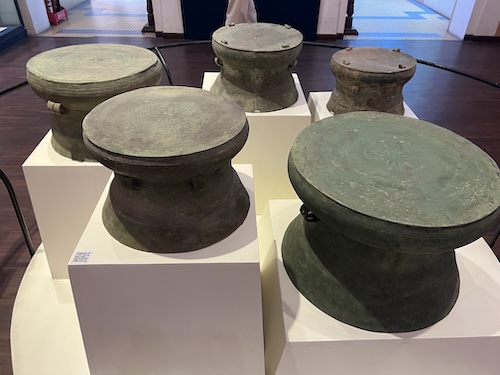
Yue was the name the Chinese used for the tribes from the South (including Southern China and Northern Vietnam). During the Qin dynasty (221–206 BC), they started conquering the “Hundred Yue” tribes. One of the commanders, Zhao Tuo, revolted agaist the Qin and established a kindom in what is today Guangdong and Guangxi in Southern China, calling it Nanyue (南越), where Nan (南) means South in Chinese.
During his reign, Zhao Tuo also conquered and annexed the kingdom of Âu Lạc, around 179 BC. In Vietnamese, Yue turned into Việt, so this kingdom used to be called Nam Việt.
All this was happening in today’s Northern Vietnam. In Central and Southern Vietnam the Sa Huỳnh culture flourished from 1000 BC to 200 AD. The artifacts from this culture were made of iron instead of bronze, and evidence suggests it was part of a trade network involving Indonesia and the Philippines.
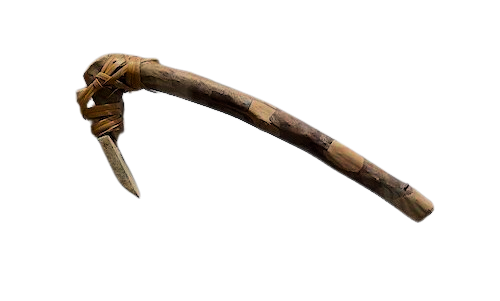
Chinese Rule (111 BC – 939 AD)
Northern Vietnam
First Chinese domination. In 111 BC the Han dynasty (202 BC - 220 AD) conquered the kingdom of Nanyue. The occupation went all the way to present day Hue. They divided Vietnam into Giao Chỉ (North), Cửu Chân (Center) and Nhật Nam (South). Around this period Buddhism was introduced into Vietnam from India and Taoism and Confucianism from the Chinese rulers.
Trưng Sisters. In 40 AD, Trưng Trắc, angered by the killing of her husband by the Han governor Su Dung, led the revolt together with her sister, Trưng Nhị. This is known as the Trưng Sisters Revolt. The sisters captured multiple states and ended the initial Chinese rule.
Second Chinese domination. In 43 AD the Han regained control and this domination lasted until 544. During this period the Han dynasty was succeeded by the Three Kingdoms (Cao Wei, Shu Han, and Eastern Wu). During this time, the Chinese prefect Shi Xie established by the Han, ruled Vietnam as an autonomous warlord, but pledged loyalty to Eastern Wu.
During this occupation, Chinese culture and customs flowed into Vietnam. One example is the custom of buring the dead with ceramic models, such as houses.
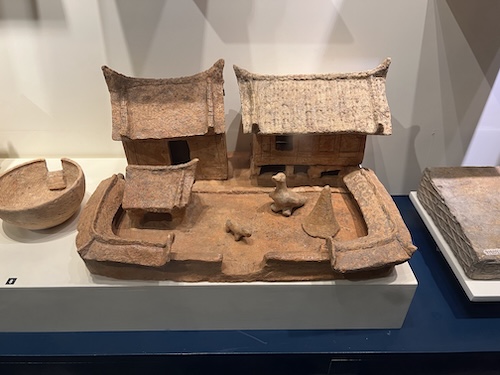
Early Lý dynasty. In 543, Lý Bí (or Lý Bôn) revolted against the ruling Liang dynasty as established the kingdom of Vạn Xuân in 544. This kingdom lasted until 602 and the rulers form what is kwnown as the Early Lý dynasty (even though one of the emperors, Triệu Quang Phục, wasn’t part of the lineage).
Third Chinese domination. In 602 the Sui dynasty reconquered the kingdom. In 679, during the Tang dynasty it changed into a protectorate and was renamed Annan (安南), literally the pacified south. The capital was established in Songping (Tống Bình) in present-day Hanoi (apparently there’s no preserved remains today in the city).
The kingdom of Nanzhao in today’s southwest China, invaded Songping in 863. In 866, the Chinese recaptured the city renaming it to Daluocheng (Đại La thành) and renamed Annan to Tĩnh Hải quân (靜海軍, Jìnghai Jūn).
Autonomous era. Since 905, with the weaking of power in China, Tĩnh Hải quân was ruled by local governors. After defeating the Southern Han invaders - one of the ten kingdoms of the “Five Dynasties and Ten Kingdoms period following the fall of the Tang dynasty - the general Ngô Quyền proclaimed himself emperor in 939 establishing the dynastic period.
Central Vietnam (192-1220)
Lâm Ấp kingdom. The kingdom started with Khu Liên, who rebelled against the Han during the second Chinese domination around today’s Huế, in 192. The kindom was renamed to Champa by Kandarpadharma in 629. From the names of the emperors it sounds like there was a shift from a Chinese to Indian cultural influence but I’m unclear when. In 446 the Chinese sacked the Lâm Ấp capital in Huế and this opened up the opportunity for an usurper from the south, possibly the Funan kingdom (see next).
Champa Kindgom - Golden Age. In 875, the king Indravarman II built a new capital at Indrapura (modern-day Quảng Nam) and made Buddhism the state religion.
In 982, Lê Hoàn, the founder of the Early Lê dynasty, invaded Champa and a military officer, Lưu Kế Tông, usurped the throne by claiming himself king, and reigned until his death in 989. The throne was then claimed by Harivarman II.
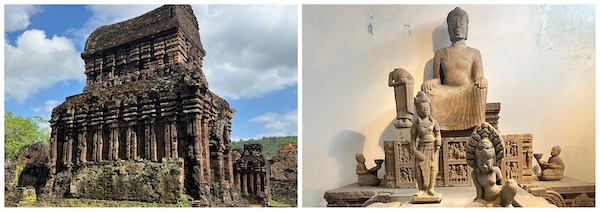
Champa and the Khmer Kingdoms. Champa and Khmer waged war through the 10 to 13th centuries. Around the 1140s, the Khmer king Suryavarman II (the found of Angkor Wat) invaded Champa multiple times and sacked the capital Vijaya. It’s believed he died during one of the expeditions.
In 1203 the Khmer king Jayavarman VII, defeated the Champa and put it under Khmer governance for 17 years. In 1220 Jaya Paramesvaravarman II of Champa and restored Cham independence.
Southern Vietnam
Funan kingdom. The Funan kingdom is believed to have occupied today’s Cambodia and the Mekong Delta and existed from 50 AD to 627. Many archeological artifacts were found in the city of Óc Eo in the Mekong Delta and are believe to belong to the Funan kingdom.
This kingdom was conquered by the Chenla from Cambodia. From the geographical maps [2], it suggests that the Mekong part of the Funan kingdom split out and pushed north, potentially explaining the change of Lâm Ấp kingdom into Champa.
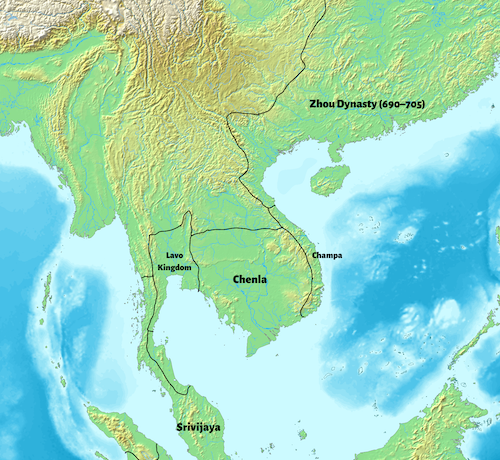
Dynastic Period (939–1945)
Northern Vietnam (939-1527)
Đinh Dynasty. (939-981) Ngô Quyền proclaimed himself emperor in 939 but died in 944. The succession led to a civil war and Đinh Bộ Lĩnh prevailed, founding the Đinh dynasty. The country was renamed from Tĩnh Hải quân to Đại Cồ Việt and moved the capital to Hoa Lư.

Due to the assassination of Đinh Bộ Lĩnh in 979, his infant son Đinh Toàn became king. The Chinese Song took the opportunity and invaded Đại Cồ Việt.
Early Lê Dynasty. (981-1009) The commander of the armed forces, Lê Hoàn, took the throne and founded the Early Lê dynasty. He defeated the invading Song army in 981 and called himself Emperor Lê Đại Hành.
After his death in 1005, Lê Long Đĩnh became the emperor and was known as a tyrant. He only reigned for 4 years, dying in 1009.
Lý Dynasty. (1009-1224) A palace guard commander named Lý Công Uẩn was nominated by the court to take over the throne, and founded the Lý dynasty. In 1010, Lý Công Uẩn moved the capital from Hoa Lư to Đại La (Hanoi), which he renamed to Thăng Long.
The third emperor of the dynasty, Lý Thánh Tông, renamed the country Đại Việt. The Lý kings adopted both Buddhism and Taoism as state religions.
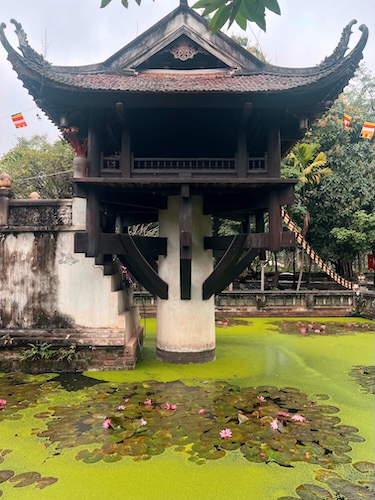
Lý Thánh Tông built the temple of literature, dedicated to Confucius. His successor Lý Nhân Tông turned it into a learning center to educate members of elite society. The temple features steles carved with the names of the mandarins who passed the strict examinations.
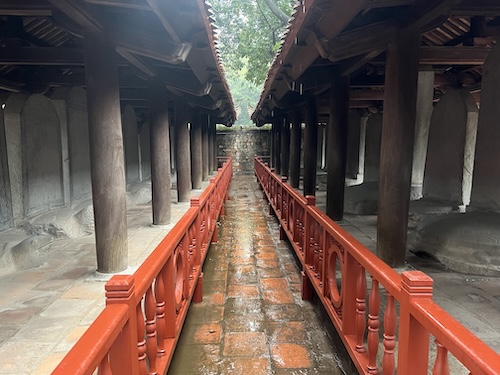
Trần Dynasty. (1224-1400) In 1224, a court minister named Trần Thủ Độ, forced the then emperor Lý Huệ Tông to abdicate and had Lý’s daughter, Lý Chiêu Hoàng, marry his own nephew Trần Cảnh, who became emperor and started the Trần dynasty. The Trần dynasty used an interesting system of succession: the emperor would cede the throne to his heir when they reached 18 years old and would then retire and become an advisor.
In the 1280s, the Mongol empire (led by Möngke Khan) and then the Yuan dynasty under Kublai Khan invaded Đại Việt but were not able to conquer the country.
The Champa kindgom joined forces with Đại Việt against the mongols but they waged war against one another throught the 14th century. The 9th emperor of the dynasty, Trần Duệ Tông, was killed in a battle against the Champa king Chế Bồng Nga.
Hồ Dynasty. (1400-1407) War led to the decline of the Trầns which opened the floor for another court member to usurp the throne, Hồ Quý Ly, who took over in 1400 and started the Hồ dynasty. He renamed the country to Đại Ngu and moved the capital to Tây Đô.
Ming Dynasty. (1407-1418) The Hồ dynasty only lasted for 7 years, ended in 1407, when the Ming dynasty invaded with the pretext of helping restore the Trần dynasty. The Ming ended up annexing Vietnam as a province, but a war of resistance ensued.
Later Lê dynasty. (1418-1527) In 1418, the son of an aristocrat named Lê Lợi led an uprising and defeated the Ming occupants, eventually expelling them in 1426. In 1428 he crowned himself emperor and established the Lê dynasty. He reversed the changes from the Hồ’s, naming the country back to Đại Việt and moving the capital back to Thăng Long, renaming it to Đông Kinh (this was to originate the Westernized name Tonkin).
In 1471, the king Lê Thánh Tông (5th of the dynasty) invaded and effectively ended the Champa kingdom. This emperor also made incursions South, in the Mekong delta, then dominion of the Khmer Empire. He waged wars against Laos and destroyed its capital Luang Prabang.
After Lê Thánh Tông’s death the kingdom declined and were eventually were overthrown in 1527.
Central Vietnam (1220-1471)
13th century. The king Indravarman V joined forces with Đại Việt to repel the Mongol forces. This alliance led in part to his son and successor Jaya Simhavarman III marrying the daugher of the Đại Việt emperor Trần Nhân Tông (3rd of the dynasty), Huyền Trân.
14th century. Jaya had multiple wives, including a princes from Java. As part of the deal, the Champa kingdom ceded two provinces to Đại Việt. When Jaya died in 1307, Huyền Trân refused to follow the tradition to commit suicide after her husband’s death (sati) and brought disgrace to Champa.
His son, Jaya Simhavarman IV, attempted to take the two provinces back, but ended up being captured and Champa became a vassal state, until 1326 when they regained their independence. Ibn Battuta during travelled to Champa in 1340.
From 1367 to 1390, the Champa and Đại Việt were at war with another, with Champa sacking Hanoi multiple times under the emperor Po Binasuor, who ended up dying in battle in 1390. In 1428, as part of change in dynasty, king Indravarman VI made peace with the emperor Lê Lợi.
15th century. The Champa kindgom ended in 1471 with Lê Thánh Tông’s conquest and only a principality named Panduranga remained.
Decentralized Period (1527–1802)
Mạc Dynasty. (1527-1677) The Lê dynasty was overthrown by a general named Mạc Đăng Dung in 1527. He killed the Lê emperor and proclaimed himself emperor, starting the Mạc dynasty. The rest of the Lê royal family fled to Laos.
A former official of the Lê dynasty, Nguyễn Kim, revolted against the Mạc and helped restore king Lê Trang Tông in Thanh Hóa (150km south of Hanoi). A civil war ensued. At this point the Lê were only figureheads, the power residing with the Nguyễns.
After Nguyễn Kim was assassinated in 1545, his son-in-law Trịnh Kiểm rose to power. In 1558, Nguyễn Kim’s heir Nguyễn Hoàng, fled to the south for fear of Trịnh Kiểm. He established himself there but continued to support the Trịnh against the Mạc. Trịnh Kiểm continued the fight against the Mạc and eventually subdued them, retaking Hanoi in 1592.
The Trịnh then became the de facto rulers of the North, while the Mạc power was reduced to the Cao Bằng on the Northermost part of Vietnam.
Trịnh and Nguyễn Lords. (1627-1777) In 1600 Nguyễn Hoàng declared himself a lord (still pledging loyalty to the Lê monarchs) and established his capital at Huế.
The Nguyễn and Trịnh went to war, lasting from 1627 to 1672. After a truce they decided to split the country in two. During this war the Europeans started intervening: the Dutch supported the North while the Portuguese supported the South with arms.
The Nguyễn lords continued expanding southward and settlers started populating the Mekong delta which belonged to the now muck weakened Khmer empire.
Tây Sơn Dynasty. (1778-1802) In 1771 a revolution broke out in the south part of the empire, in the Tây Sơn district. It was led by three brothers named: Nguyễn Nhạc, Nguyễn Lữ, and Nguyễn Huệ, unrelated to the Nguyễn lords.
By 1776 they killed most of Nguyễn royal family. A surviving member Nguyễn Phúc Ánh (future Emperor Gia Long) fled to Siam (Thailand), gathered military support but failed to restore power. In 1778 Nguyễn Nhạc declared himself emperor and found of the Tây Sơn Dynasty.
The Tây Sơn army marched North and defeated Trịnh Khải, who committed suicide. The then Lê emperor, Lê Chiêu Thống, fled to China and the Qing emperor Qianlong provided an army that also failed to defeat the Tây Sơn brothers.
Nguyễn Huệ declared himself emperor in 1788, naming himself Quang Trung. His brother Nhạc abdicated from the emperor title and declared himself king of Tây Sơn. By defeating the Nguyễn and Trịnh lords, and expelling the Lê emperor, Nguyễn Huệ effectively unified Vietnam again under a new emperor.
Huệ died in 1792. After his death the Tây Sơn rulers fought against each other and weakened their power. Huệ’s son, Nguyễn Quang Toản, became the 3rd emperor of the dynasty.
In 1788 Nguyễn Phúc Ánh captured Gia Định (Saigon) and established a base there. With support of everyone (French, Chinese, Siamese), Nguyễn Ánh defeated Nguyễn Quang Toản after the siege of Thăng Long (Hanoi) in 1802.
Nguyễn Phúc Ánh declared himself emperor, starting the Nguyễn dynasty ruling over a unified country. He named himself Gia Long (Gia from Gia Định and Long from Thăng Long).
Gia Long sought recognition from the Qing Emperor of China and asked them to call the country Nam Việt (the Chinese referred to it as Annam up to that point). To avoid confusion with the ancient kingdom, the Qing court decided instead to call it Việt Nam.
The Vietnamese Alphabet. In 1651 the French missionary Alexandre de Rhodes published a trilingual dictionary of Vietnamese, Portuguese and Latin. In it Vietnamese words were written in Chữ Quốc ngữ, the latin alphabet which is still used to write Vietnamese to date.
The alphabet, which contains modified diacritics to support the complex phonemes of the Vietnamese language, is said to have been developed by the Portuguese Francisco de Pina and improved upon by subsequent missionaries aiming to facilitate the conversion of locals.
Unified Vietnam Period (1802–1862)
In 1802 Nguyễn Ánh established the Nguyễn dynasty and started the unified ruling of Vietnam. He moved the capital to Huế, where he build the Imperial City.
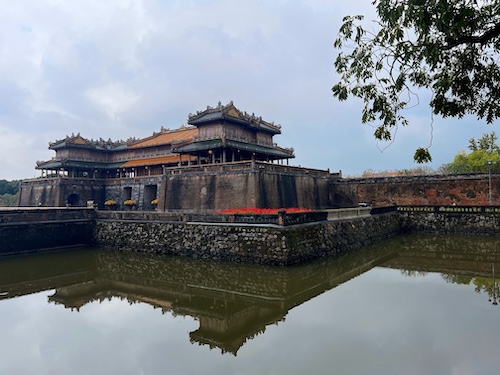
Subsequent generations of Nguyễn emperors witnessed increased hostilities with the French.
In 1858, the French bombarded Đà Nẵng but weren’t able to gain foothold, so they sailed South and attacked Gia Định (Saigon) and captured it after a siege in 1859. In 1862 the Treaty of Saigon was signed by the then emperor Nguyễn Tự Đức, ceding Saigon to the French as a colony, ending the period of unified ruling.
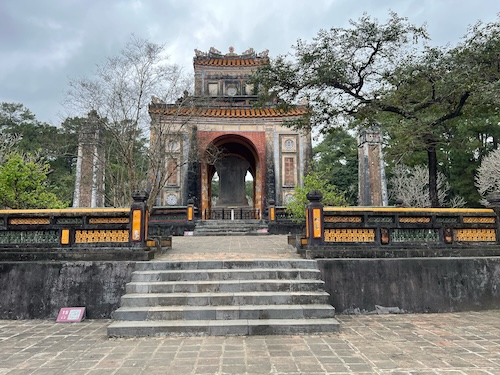
French Colonial Period (1862–1945)
In 1883, amidst a turbulent sucession of rulers, the 6th emperor Nguyễn Hiệp Hòa surrendered to France and signed the Treaty of Huế, which recognized a French protectorate over the rest of Vietnam which was divided into Annam and Tonkin. For this loss, Hiệp Hòa was led to commit suicide.
The French Indochina was created in 1887 and Vietnam was split into 3: Cochinchina (South), Annan (Center) and Tonkin (North). Cambodia and Laos were added to the federation in 1893. Cochinchina was a colony while Annan and Tonkin were protectorates, where the Nguyễn emperors were still the de jure rulers.
During the reign of Thành Thái, the French imposed a western-style education, including the use of the Chữ Quốc ngữ writing system (modified version of Francisco de Pina’s alphabet from the 17th century). He encouraged the French-style education but opposed French rule.
For this he was arrested and sent into exile. His son Duy Tân was installed in this place in 1907, but during an attempt to overthrow the French in 1916 he was also sent into exile. The French then chose Khải Định, who was more willing to collaborate with the French, to be the new emperor.
One of this legacies was to stop using Chinese as official written language and use Chữ Quốc ngữ (the modified Latin alphabet). His tomb and palace in Hue reflected his alignment with the West, having a more European architecture compared to his predecessors.
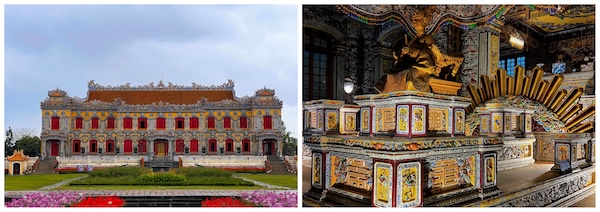
In 1940 Japan invaded Indochina and made the French colonial government (weakend due to the German conquest back in Europe) a puppet administration. Meanwhile, Hồ Chí Minh formed the Việt Minh coalltion in 1941 in the North.
In March 1945 the Japanese removed the French government and established another puppet state, the Empire of Vietnam, to be headed by Bảo Đại, the last of the Nguyễn rulers.
The empire didn’t last long. Japan was defeated in August 15, 1945. General Douglas MacArthur forbade the allies from occupying Southeast Asian countries until he went to Tokyo to receive the official Japanese surrender, which left a power vacuum in Vietnam. Hồ Chí Minh took the opportunity and declared the Democratic Republic of Vietnam (DRV) in Septermber 1945.
Modern period (1945-present)
The French returned to Vietnam and with help from the British and the Republic of China, retook control of the country. In early 1946 there were some agreements between Hồ Chí Minh and the French (Ho-Sainteny Agreement), which estipulated some autonomy for the DRV but allowing the French to station troops for 5 years.
First Indochina War (1946-1954)
With tensions high, an incident in Haiphong in November 1946 escalated and caused the massacre of thousands of Vietnamese, mostly civilians. In December 19 of the same year the Viet Minh bombed a power plant in Hanoi and then started attacking the French in there. This marked the start of the First Indochina war.
France retook the city in February 1947. In 1949 France recognized Vietnam as an independent member state of the French Union, called State of Vietnam, and to be headed by the former emperor Bảo Đại (anti-communist) and with the capital in Saigon. This marked the end of French colonial rule in Vietnam, even though they still held authority.
The Geneva Conference took place in 1954 and it was to decide the situation in the Korean War and the First Indochina War. The conference decided to temporarily divide Vietnam, with the North under communist rule and the South led by the State of Vietnam. This marked the end of the First Indochina war and the end of the French Indochina.
Vietnam War (1955–1975)
In 1955, the prime minister Ngô Đình Diệm deposed Bảo Đại and renamed the State of Vietnam to Republic of Vietnam (aka South Vietnam). In 1956 the last French miliary left South Vietnam.
The United States was supporting Diệm’s regime to stop the spread of communism from the North. Diệm turned out to be an unpopular dictator. Diệm, a Catholic, started persecuting Buddhists and as a form of protest the monk Thích Quảng Đức set himself on fire in June 1963. This caused international uproar and isolated Diệm politically.
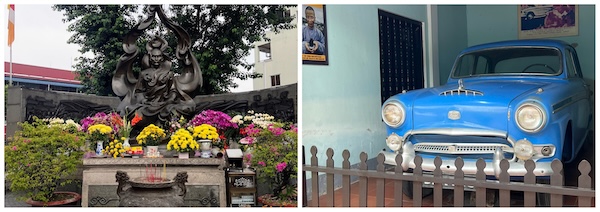
In November 1963, backed by the CIA, the general Dương Văn Minh led the Army of the Republic of Vietnam (ARVN) to a coup d’état, deposing Diệm who was assassinated with his brother the day after.
In January 1973 the Paris Peace Accords was signed by North Vietnam, South Vietnam and the United States. Following the accords, the United States withdrew its forces from Vietnam a few months later.
In 1975 Saigon fell to the North. In 1976 Saigon was renamed to Ho Chi Minh City.
Post-war Period (1975–present)
In July 1976 the North and South Vietnam were reunified and the country was renamed to the Socialist Republic of Vietnam (SRV). Many people from the South were sent to re-education camps, and at the same time many people from the North migrated South as part of the New Economic Zones program. During this period, many Vietnamese fled the country.
In the 1970s the Khmer Rouge regime from Cambodia started attacking villages in the border with Vietnam. Vietnam then invaded Cambodia in 1978 and ousted the Khmer Rouge. The Khmer Rouge was allied with Beijing, which prompted China to invade North Vietnam in 1979.
In 1986 Nguyễn Văn Linh became the general secretary of the party and launched a campaign for economical development called Đổi Mới.
China and Vietnam normalized their ties in 1991, right before the dissolution of the Soviet Union. In 1994 the United States lifted its economic embargo and in 1995 thei relation was normalized.
In January 2007, Vietnam became the 150th member of the World Trade Organization.